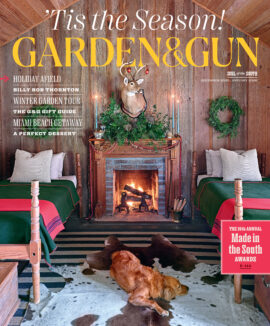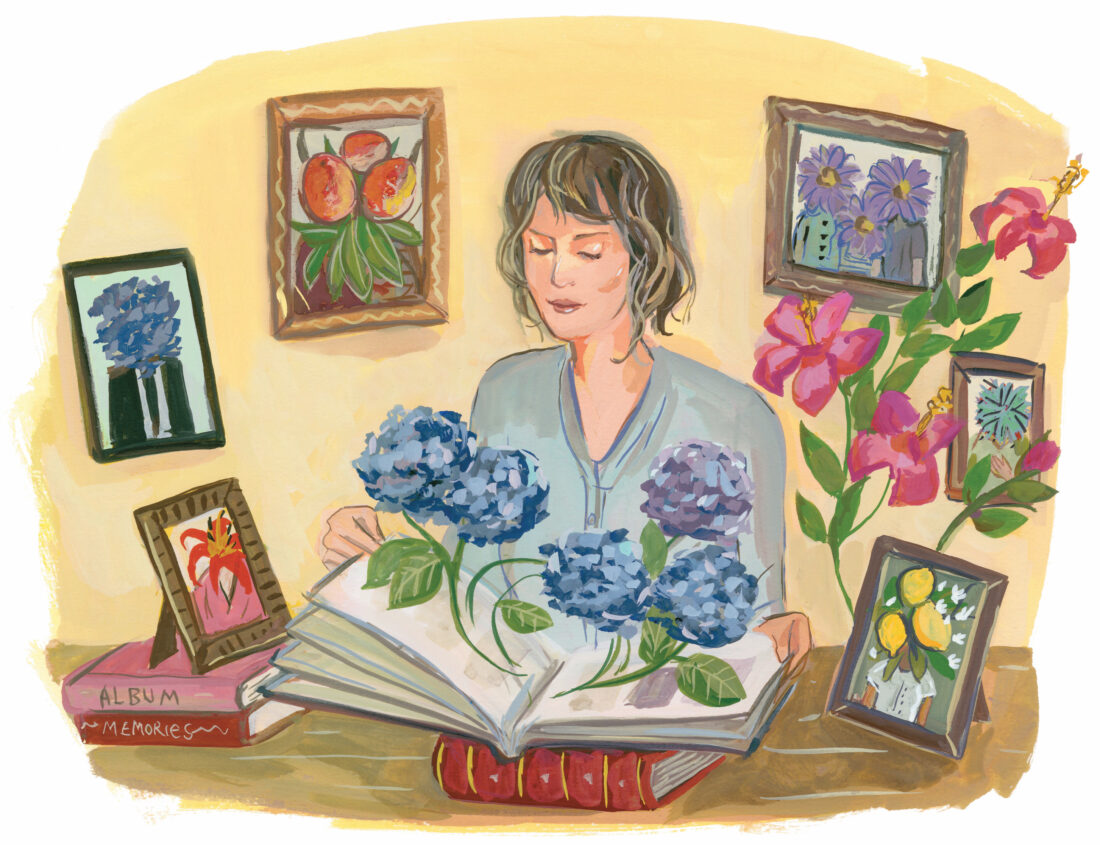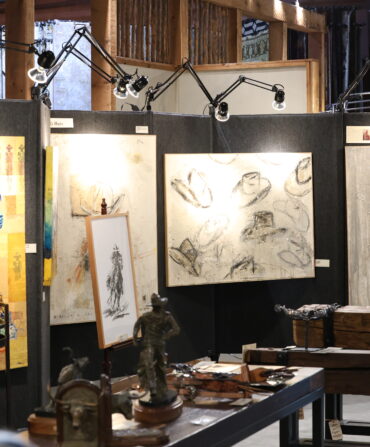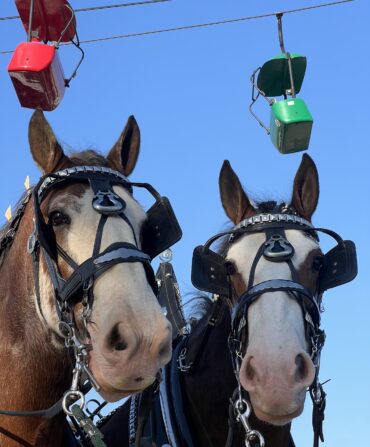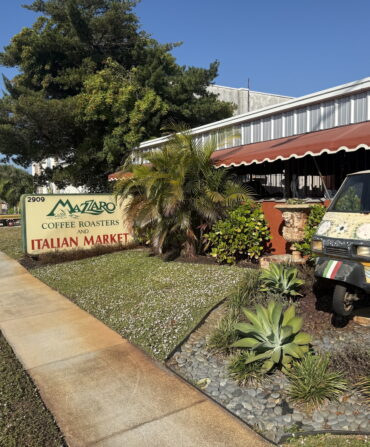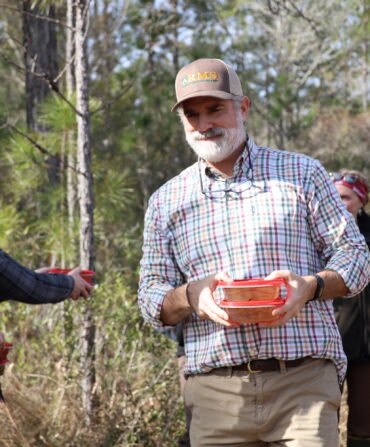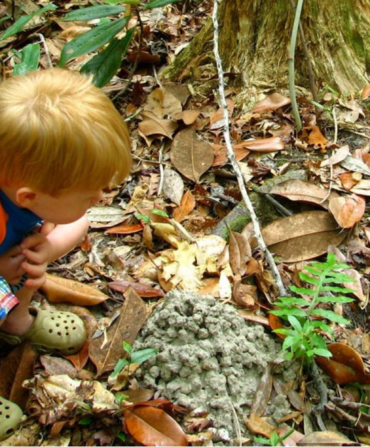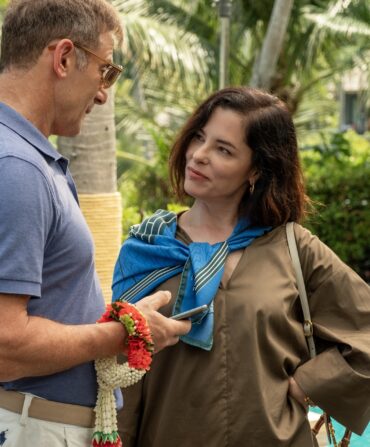Lou Proctor, one of North Carolina’s most prolific art dealers, once told me that plants are art for people who don’t have money. Her assertion stung a little at first. I won’t hesitate to drop sixty bucks on a rare three-inch Caramel Marble philodendron. I don’t wince when I blow a small fortune, one Lowe’s trip at a time, on every annual, perennial, fruit tree, and fern that catches my eye between March and June. I’ve sunk no small amount into my houseful of plants. Yet, she was right: I just can’t bring myself to write big checks for paintings or sculptures that might mock me from their place on the wall or a plinth if my financial situation takes a downturn.
Over time, though, any shame I may have felt about that evolved into a sort of pride, and now I appreciate Proctor’s philosophy in a new way. Art dealers like her often encourage collectors to select pieces for the home that, ideally, hold meaning beyond their beauty—say, that painting of the Ponte Vecchio above your fireplace you bought on your honeymoon; or the original Vollis Simpson whirligig you splurged on because it reminds you of growing up in rural Eastern North Carolina. And that’s how I look at plants.
This botanical philosophy began to percolate about a decade ago during filming of my PBS series A Chef ’s Life. For the episode devoted to apples, the show’s fixer (a.k.a. my dad) arranged for me to learn how to make applejack hand pies from Clara Muriel Barwick, the proprietor of Deep Run, North Carolina’s long-shuttered B&S Café. To enter Barwick’s single-story redbrick house, you passed through a glassed-in porch. At the room’s center stood a glistening jade plant with the thickest trunk I had ever seen, a succulent so tall and broad it practically blocked both porch doors.
Already an enthusiastic plant tender, I congratulated Barwick on the specimen’s extraordinary presence and made sure to call it a jade so she would know that I was a kindred spirit. She took a step back, smiled at the succulent, and then told me about her son. Eddie had died in a car accident when he was seventeen, and at his visitation, one of her friends had given her a small jade plant. Since then, she had nurtured the plant as she once had Eddie, scooting it into the best light, judiciously watering its roots, spritzing its leaves to make them shine, and pruning its branches. That moving admission changed the way I have since approached every plant in my kingdom.
You see, prior to this revelation, my dabbling in the world of flora was pretty one-dimensional. I bought plants because they were pretty, or low-maintenance, or, in the case of multiple fiddle-leaf figs, because they were in vogue. From there, I took care of them largely because I had paid for them and wanted to protect my investment. Secondarily, it also felt cool and grown-up to successfully tend something and have it flourish—reassuring to a new mother of two humans who also had to be fed and watered. But after my experience at Barwick’s, my relationship to my plants deepened. I started assigning personality, purpose, and meaning to my chlorophyll comrades.
Many of them now remind me of poignant moments in my life or serve as time machines. The pink hibiscus was the first plant we bought for my first restaurant. She lived there through the fire that burned down our kitchen but barely survived the nine weeks I was away on a book tour. She has since retired from the restaurant business and lives with me in Deep Run. When the house is quiet and the light is right in her window, I think back to the stress-filled wonder of those early years at Chef & the Farmer, when both the hibiscus and I were youthful and primed to grow.
Then there’s my trio of Christmas cacti: one for every year I owned part of a beach house on Bald Head Island. I bought one my first weekend there and decided on the spot that I would add to the collection every time I was lucky enough to spend part of the holidays island-side. We sold our house last year, and with it went the Christmas cactus tradition. I intend to take really good care of the three I have.
I also try to project onto loved ones my need to give plants a sentimental stake in my universe. For the past four years, I have explicitly asked my children to get me a hydrangea for Mother’s Day. I made it clear I did not want breakfast in bed or a commemorative mug. I wanted a hydrangea. I imagined that we would plant the gift together every year, and then one day when I was gone, they would be able to look at the hydrangea patch and think of all those memories we made on Mother’s Day.
Unfortunately, my kids don’t give much thought to my needs at this stage in their lives. I have received no hydrangeas—not one. But in an effort to both honor my own mother and lead by example, I did start a small peach grove in my backyard. My mom has talked for years about planting peach trees as a way to relive her childhood. As she tells it, she and her siblings enjoyed the spoils of a large peach grove my grandmother tended until my grandfather cut down all the trees—in order to build chicken houses—without asking her. It was not a popular decision. Seventy years later, I’m attempting to reverse it.
Then there is, I admit, the darker side of anthropomorphizing my greenery. Let’s call it less purposeful, more subconscious (and subversive). Like the time a colleague gave me a Meyer lemon tree for my birthday. I recall questioning the gesture immediately. We were not pals. In fact, I had recently fired her and then been shamed into rehiring her after she wrote me making the case that I had never given her the tools to be successful at her job in the first place.
Now I had a thorny citrus tree that would never produce fruit in the climate where I lived and a disgruntled assistant to maintain. Given our bumpy ride, it’s no surprise that the coworker and I eventually parted ways, yet I did continue to take care of the tree—kind of. I watered it enough and offered it ample sunlight to survive nearly seven years, but I never fertilized, pruned, or repotted it. I’ve thought many a Saturday about extending that care to the lemon tree. It just never seemed like the right weekend.
Maybe I withheld my attention because I didn’t want to dig up old grievances or insecurities? Maybe I didn’t feel like investing in a bigger pot to give its roots room to roam? All I know is that I haven’t given it the tools for it to be successful, either. Still, I could have put it out into the cold to die. And I haven’t yet.

